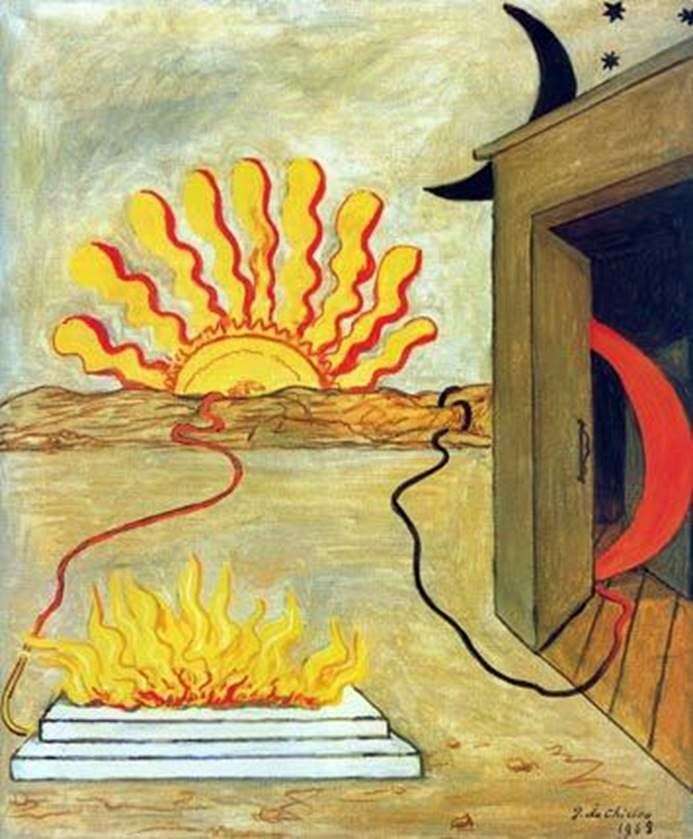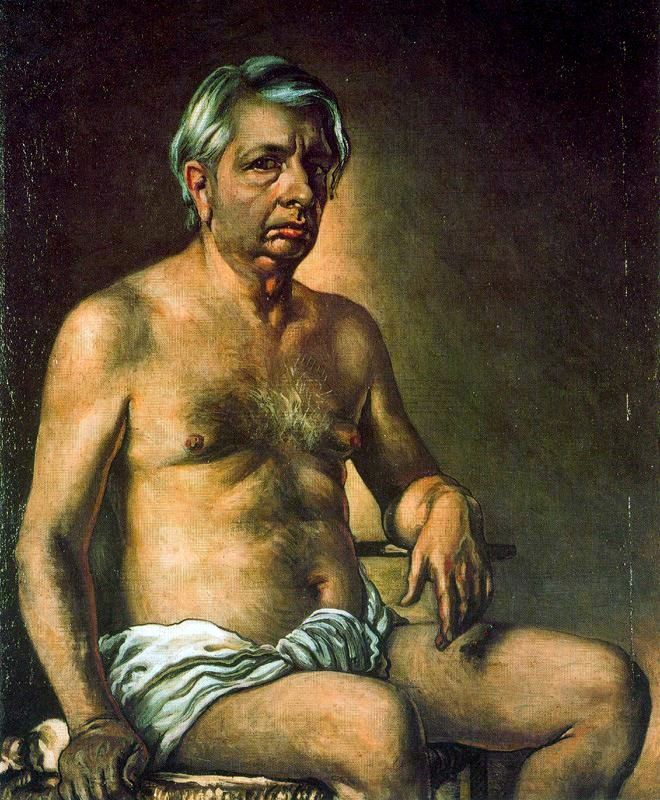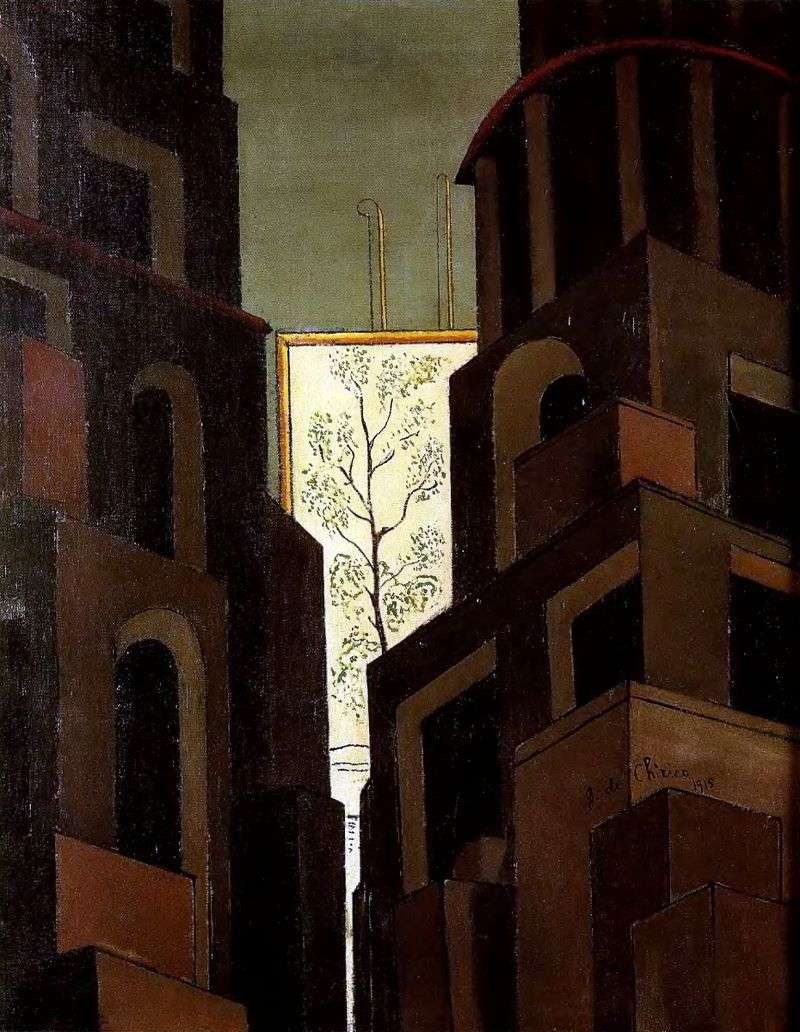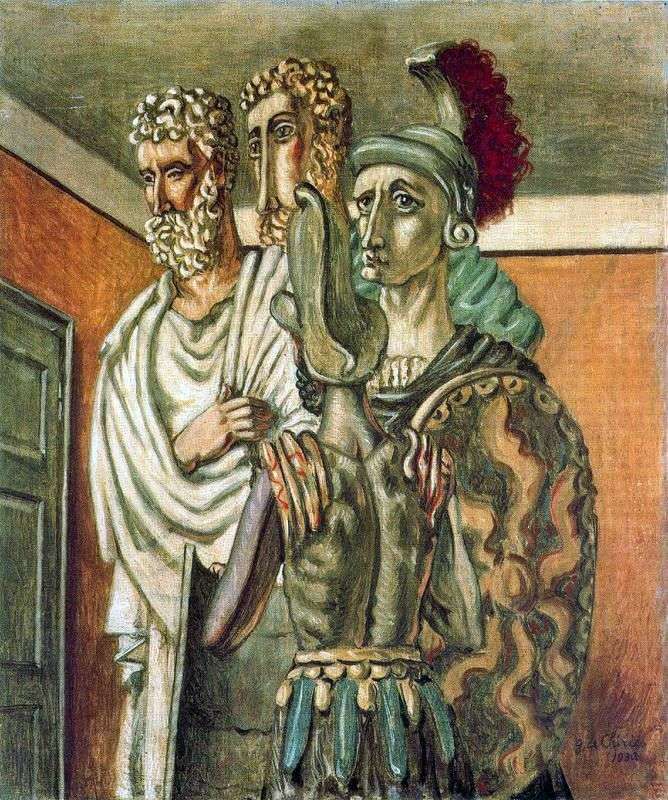
De Chirico painted several portraits of his second wife, Isabella, but, by and large, this genre was never particularly attracted to him. An exception to this rule was a series of self-portraits, in which the artist captured himself in various clothes and in different years of life. Most self-portraits are sustained in a realistic manner such, for example, a self-portrait written in 1945.
Probably, de Chirico tried to follow the example of Rembrandt, who created his own “chronicle in self-portraits.” In favor of this assumption, his experiments on trying on various masks – a robber-gypsy, an artist for an easel or, finally, a grandee in a 17th-century costume – also speak of him.
 Sacrifice to the Sun by Giorgio de Chirico
Sacrifice to the Sun by Giorgio de Chirico Autoportrait – Giorgio de Chirico
Autoportrait – Giorgio de Chirico Purity of the imagination by Giorgio de Chirico
Purity of the imagination by Giorgio de Chirico Classic figures in the room by Giorgio de Chirico
Classic figures in the room by Giorgio de Chirico Return of Ulysses by Giorgio de Chirico
Return of Ulysses by Giorgio de Chirico Tower by Giorgio de Chirico
Tower by Giorgio de Chirico Portrait of Guillaume Apollinaire by Giorgio de Chirico
Portrait of Guillaume Apollinaire by Giorgio de Chirico The great metaphysician by Giorgio de Chirico
The great metaphysician by Giorgio de Chirico